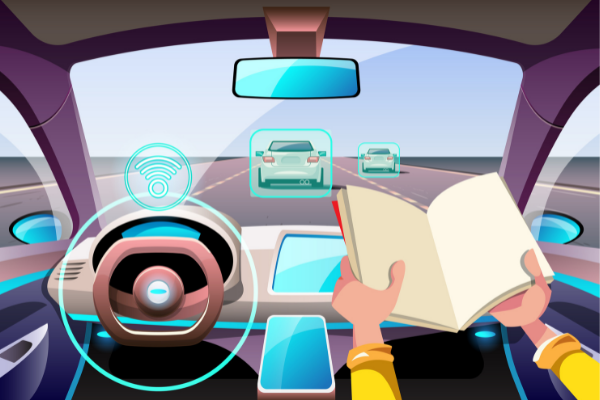
People are afraid of losing control. That is one of the reasons why so many of us are much more afraid of flying than driving: we are not in charge of the plane. Even if the journey to the airport is tougher than the flight, it seems safer since we are in charge of the same.
A self-driving car, also known as an autonomous vehicle or a driverless car, is a vehicle that travels between destinations without the assistance of a human driver, using a combination of sensors, cameras, radar, and artificial intelligence (AI). A vehicle must be able to get into a predefined place without the assistance of a person on roads that have not been modified for its usage to be considered completely autonomous.
It’s quite logical. 10 years ago; face recognition was a cutting-edge technology; today, you’re likely to have a novelty app on your phone that performs it. However, due to the multiple factors involved, autonomous driving has proven problematic. It is critical to anticipate the actions of all other road users.
Self-driving car systems rely on artificial intelligence. Their engineers use huge amounts of data from image recognition systems, as well as machine learning and neural networks, to build self-driving cars.
Register for AMCAT | India’s Leading Fresher’s Assessment And Job Site (myamcat.com)
The neural networks find patterns in the data, which are then fed into machine learning algorithms. Images from self-driving car cameras are used to train the neural network to identify traffic signals, trees, curbs, pedestrians, street signs, and other elements of any given driving environment.
Autonomous vehicles will become safer than human drivers as AI technology advances. “Self-driving cars will have fewer crashes and be considerably safer than humans,” says Sébаstien Krier of the Cyber Policy Center at Stanford University. “They never get tired, never get drunk, never do anything.”
The following are self-driving features that are available in numerous cars:
- Without the driver’s hands on the wheel, hands-free steering aligns the vehicle. The driver must remain alert at all times.
- Down to a stop, adaptive cruise control (ACC) maintains a preset gap between the driver’s automobile and the car in front.
- When the driver crosses lane markers, lane-centring steering automatically moves the car toward the opposing lane marking.
Despite the obstacles remaining to be solved, self-driving vehicles are rapidly becoming a reality, and they have the potential to change our world in unexpected ways.
Experts are working toward the ultimate vision of entirely autonomous vehicles that may be deployed and used wherever in the world, including within industry, wider transport systems, and personal-use cars.
Although, it is unlikely that most people will be able to afford an automated car in the next ten years. However, the promise of autonomous technology is that it will free us from our reliance on cars, transforming how we spend our time as well as the environment.
Driverless cars will someday make their way into our daily lives in the same way that electric charging stations have steadily made their way into car parks, side streets, and service stations. We may wonder how we ever got along without them in the coming years.

























